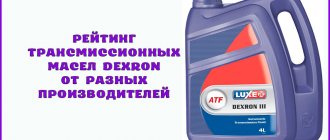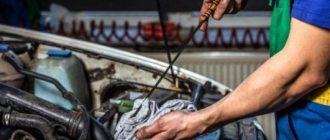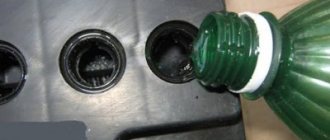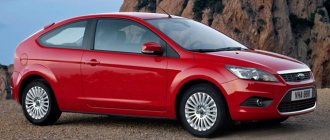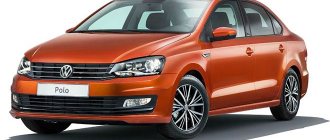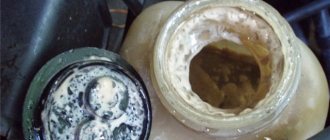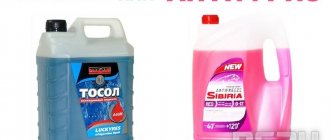Answers to complex questions about modern antifreezes for road construction and special equipment
Part 1 Part 2
Specialists in the production of coolants for high-power diesel engines of road construction and other special machines continue to answer our questions.
What water should be used in the coolant? Can I use tap water?
For a long time, people did not want to pay for the transportation of clean water; they preferred to buy antifreeze concentrate and dilute it with water themselves. But today, many consumers already understand that using good quality water in the coolant helps reduce the amount of sediment in the cooling system and the risk of engine overheating. In addition, when choosing a ready-to-use coolant, you can be sure that its freezing temperature is exactly as indicated on the label.
Nevertheless, antifreeze is often still prepared the old fashioned way - by diluting the concentrate with water. The water that is included in the antifreeze must be as clean as possible - free from impurities of other substances and ions. Otherwise, due to the precipitation of calcium and magnesium salts from the water composition, a layer of scale is formed on the hot walls of the engine cylinder liners, which significantly impairs heat dissipation. As a result, the risk of engine overheating increases.
Ideally, antifreeze should be prepared using deionized water. Deionized water is absolutely pure water (H2O), from which mineral impurities have been removed - calcium, magnesium, corrosive substances such as chlorides and sulfates, as well as bacteria and ions. Such water does not occur in nature and is only obtained artificially. In a garage, it is difficult to purify water in this way. Deionized water extremely aggressively absorbs any substances from the air, containers and pipelines, so it is quite difficult to store it; special fluoroplastic containers are used for this. Distilled water, which is sold in pharmacies, is not an analogue of deionized water, as it is obtained using a different technology and contains a certain amount of ions and contaminants.
In practice, unfortunately, few people use deionized water to prepare antifreeze. And if ready-to-use antifreeze is not used, and deionized or distilled water is not at hand, it is recommended to at least boil the water for half an hour. It is preferable to use soft (that is, containing few impurities) water for these purposes - rain or snow (although given the current state of the environment, the air through which drops of water or snowflakes pass contains a lot of dust and contaminants). Harder water comes from open reservoirs, but there are many organic impurities there. And the most undesirable is water from wells and water pipes. Marine water should absolutely not be used.
It is recommended to use a water deionization unit with cation filters, as well as chemical treatment: add slaked lime to the water and introduce anti-scale substances.
Water deal: what happens if you mix poured antifreeze with water and a direct answer to the question
Experts warn that there is no need to rush; you need to look through the factory booklet for information about the filled emulsion and ways to restore its level. Then the question of what will happen if you mix antifreeze with water will disappear by itself. We will present multilateral situations when it is possible to add natural chemical liquid and when it is not.
A little fluid was lost
Let's say the nominal level in the tank has shifted down by 100...300 milliliters. In this case, you can confidently fill in water and not worry about the condition of the system. The balance of additives will not change, since the evaporated liquid is just water. It's worth knowing:
- Antifreeze is half water.
- Only distilled composition can be added.
- Ordinary water cannot be added due to the fact that the outcome of the interaction of the natural chemical composition with coolant additives is unknown.
- The solution from the tap is harsh and can lead to corrosion of the cooling system passages.
For your information. Many manufacturers sell concentrates. These products are precisely dissolved with distilled water. The proportions depend on the desired freezing temperature and are indicated on the packaging. The nominal ratio of diluted substances for temperate climates is 1:1.
Coolant is missing in large quantities
The best option would be to add ready-made antifreeze or diluted concentrate. If a leakage situation occurs far from points of sale, and it’s summer outside, then you can safely pour the distilled composition. As a last resort, filtered water will do.
Read more: Drom Bratsk car sales
If diluted with a large amount of water, the coolant must be replaced. Moreover, this should be done before the onset of the first cold weather. Naturally, in winter it is prohibited to resort to excessive dilution of the coolant. After all, it may freeze and the engine will require partial repairs.
Tell us about waterless antifreezes
Trying to avoid the disadvantages of water in coolant, the American company Evans Cooling Systems Inc. fifteen years ago, it developed a line of waterless antifreezes, including a product for heavy duty equipment, High Performance Heavy Duty Waterless Coolant. Antifreeze mainly consists of propylene glycol.
Advantages . Polypropylene glycol is completely non-toxic, environmentally friendly, and not dangerous if it enters the human body. Its operating temperature range: from –40 to +180 °C, boiling point – above +190 °C. There is no need to maintain excess pressure in the cooling system. Antifreeze does not boil, therefore, there is no danger of vapor locks forming in the cooling system. Water is a corrosive substance; when using anhydrous antifreeze, the likelihood of corrosion is greatly reduced, and corrosion inhibitor additives are not needed. According to the manufacturer, cavitation and, therefore, pitting corrosion are impossible in a cooling system with anhydrous antifreeze. This antifreeze does not require anti-cavitation additives, therefore, the owner does not need to regularly check their levels. Propylene glycol contains no mineral impurities that could form sediment and scale in the cooling system. So, propylene glycol anhydrous antifreeze requires almost no maintenance.
In addition, by using waterless antifreeze, you can reduce your car's fuel consumption by up to 3% (with appropriate adjustments to the thermostat and cooling fan settings), as well as save on maintenance costs.
Flaws . However, anhydrous antifreeze also has disadvantages. If a large leak occurs in the cooling system, anhydrous antifreeze cannot be immediately replaced with regular antifreeze or water, even if the leak is repaired. Only anhydrous antifreeze can be added to the system. In a system without excess pressure, ordinary antifreeze or water can boil. Anhydrous antifreeze costs about 1000 rubles/l, and given the volume of cooling systems of heavy road construction machines, this amounts to a considerable amount. In addition, to switch to the use of anhydrous antifreeze, flushing fluid and re-equipment of the cooling system will be required: it is advisable to replace the conventional thermostat with one that opens at 101 °C, and the fan switch should operate at 110 °C.
Of course, waterless antifreeze is primarily suitable for use in expensive sports cars and motorcycles, as well as premium passenger cars. However, premium road construction and mining equipment is not much different in price from these supercars, so the manufacturing company offers in its product line a grade of anhydrous antifreeze designed for heavy equipment.
conclusions
There is no need to worry about what will happen if you mix any antifreeze with water. Half of the coolant consists of natural chemical composition. The rest is additives and ethylene glycol or propylene glycol alcohol. So the answer suggests itself - you can add water to the coolant, but only distilled or, in extreme cases, filtered.
But do not abuse the amount of water - no more than 300 ml. Otherwise, the freezing temperature of the mixture will change not for the better. Of course, there is a way out in this case as well - in winter you can cover the car radiator with insulation or fabric.
You can mix antifreeze of different colors, but only if they are of the same brand. There are no generally accepted standards for the color of solutions. Different manufacturers may have the same class of coolant painted in different colors.
Is it possible to mix different brands and types of antifreeze with organic and inorganic additives?
The operator must know the type of antifreeze filled into the cooling system of his machine. If coolant is accidentally mixed with organic and inorganic additives, as a result of mutual poisoning, they will not be able to provide adequate protection of engine parts.
In an emergency, when it is necessary to add coolant, but there is no antifreeze of this type, you can add water to ensure the operation of the cooling system until it becomes possible to add the correct type of coolant. Please note that water, especially mineralized water, is a corrosive substance and is more dangerous for heavily loaded diesel engines than, for example, for gasoline engines of passenger cars. Therefore, it will be necessary to bring the content of additives in antifreeze to normal as soon as such an opportunity arises.
Antifreeze with organic additives (OAT) and coolant with organic and inorganic additives (NOAT) can be mixed in an emergency, but it must be taken into account that as a result of mixing, the inhibitor additives in both fluids neutralize each other. The opinions of the experts we interviewed differed on how to proceed. In this case, some experts advise measuring the level of additives in the resulting antifreeze and bringing it back to normal using additional (restoring) SCA additives. Others believe that, given the considerable cost of modern engines, if you spoil the fluid by adding a different type of coolant to it, drain everything without regret and fill in a new one recommended by the engine/car manufacturer, and in the future try not to do such things errors.
It is usually believed that in coolant “with extended service life” you can safely add up to 10–25% of conventional coolant (not “long-lasting”). If the volume of added antifreeze is more than 25%, you should check the resulting antifreeze in the cooling system: does it contain organic additives (OAT) in sufficient quantities so that it is able to protect engine parts.
You should not draw a conclusion about the type of coolant based on its color; you can easily make a mistake. For example, both coolant without nitrites and with nitrites can be painted red. If there are doubts about the compatibility of two antifreezes, it is recommended to at least approximately check their compatibility in this way: mix in a 1:1 ratio, mix thoroughly and observe for an hour to see if there is any separation of liquid and sediment. Such a check will help to reject at least the lowest quality counterfeit antifreezes.
Is it possible to add water to antifreeze?
There are various situations in life when the required amount of refrigerant is not at hand. Therefore, in order to get to the nearest service station or auto shop, you have to fill up with ordinary water.
To avoid serious problems with your car in the future, you need to adhere to the following recommendations:
- It is advisable to use ordinary tap water only when boiled. Carrying out such a simple heat treatment will remove a significant part of harmful impurities from the water.
- For minor additions, it is advisable to adhere to the recommended proportions to maintain the functionality of the remaining antifreeze. This is very important in winter, if the air temperature outside is negative.
- In summer, you can drive with diluted refrigerant for a longer period of time. Before the first frost sets in, you need to drain all the liquid from the system and clean it completely. After completing this work, you must fill in new refrigerant.

